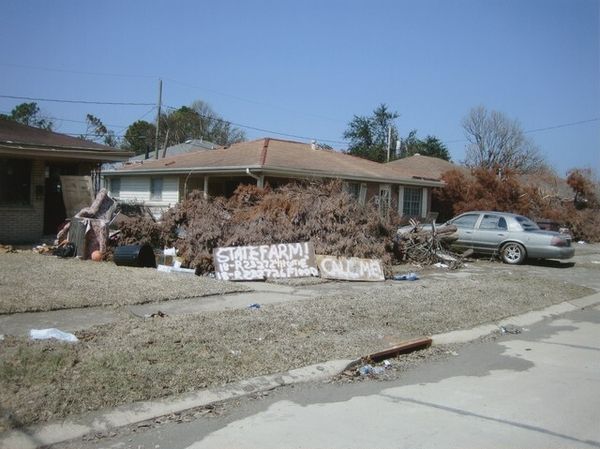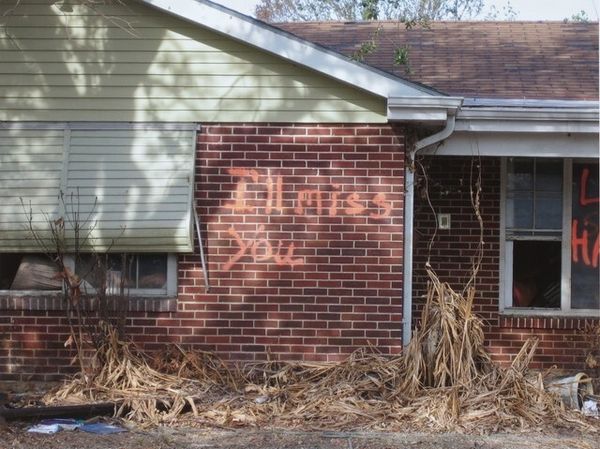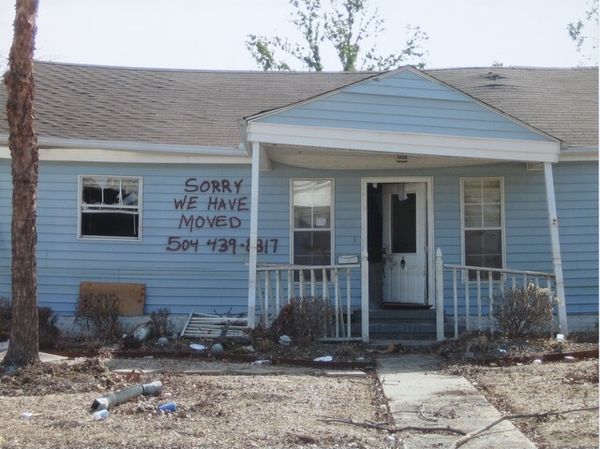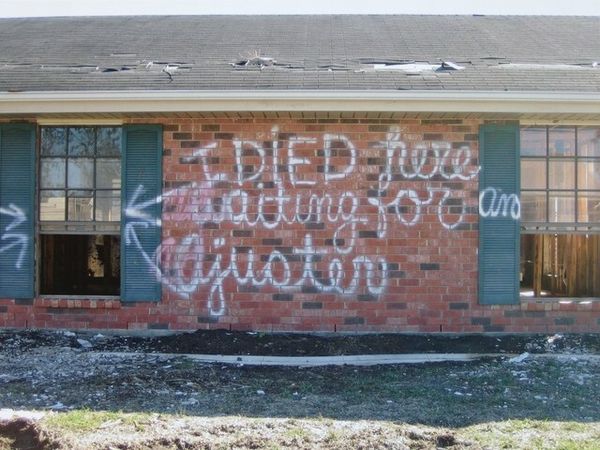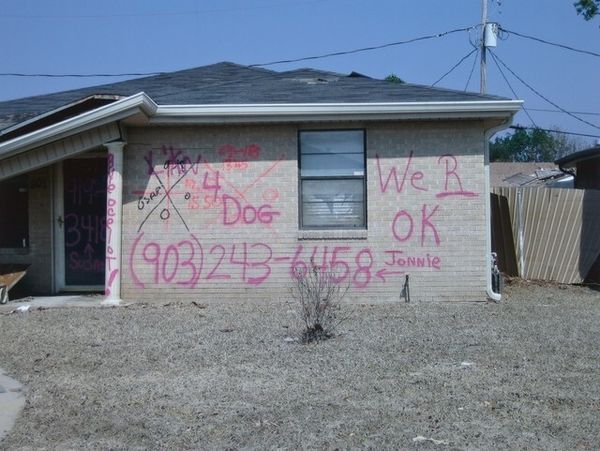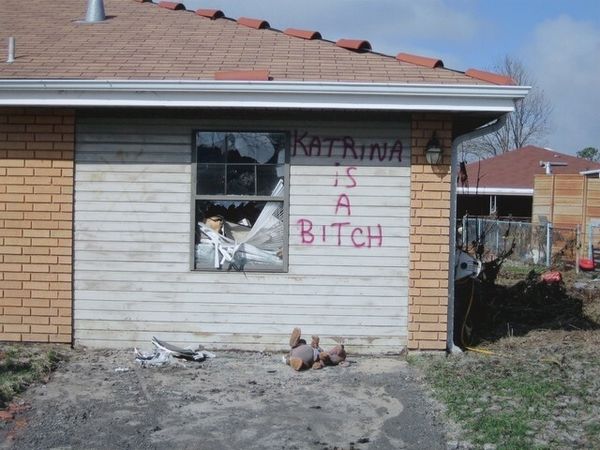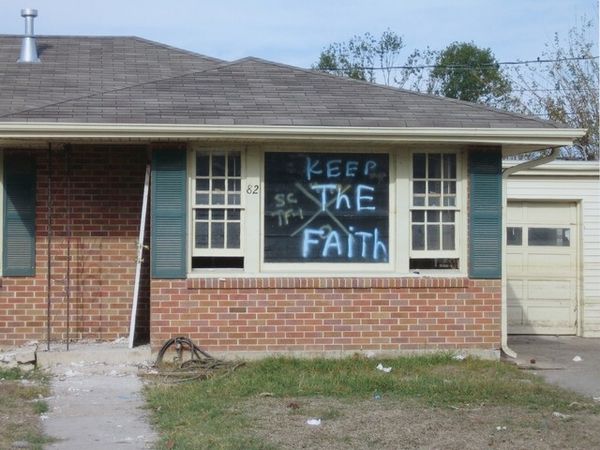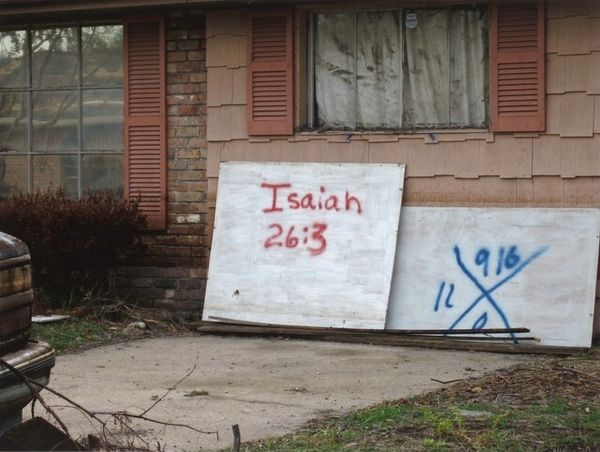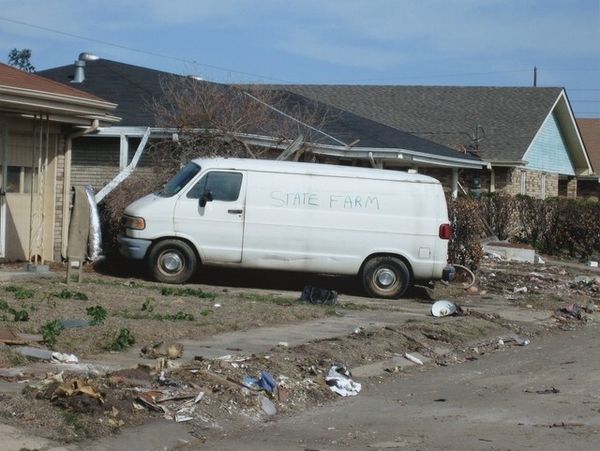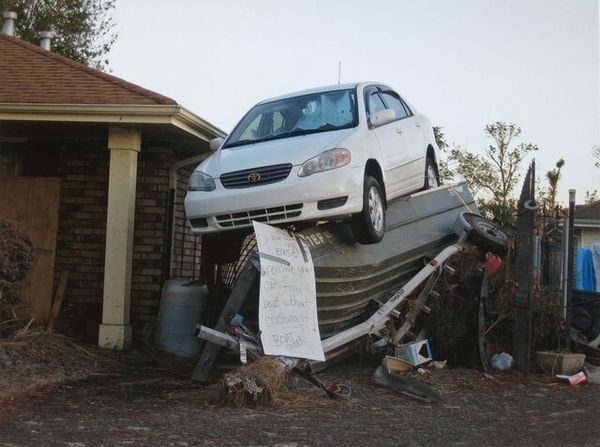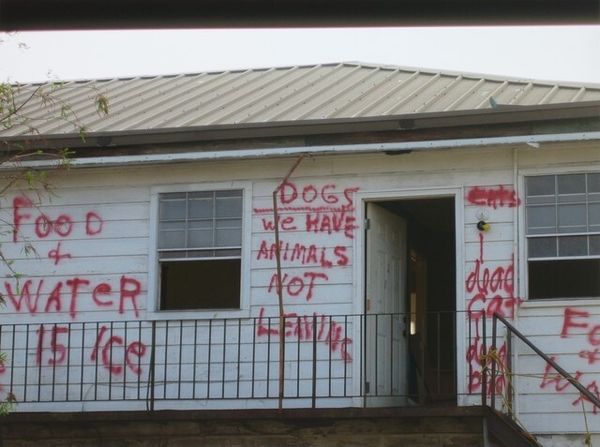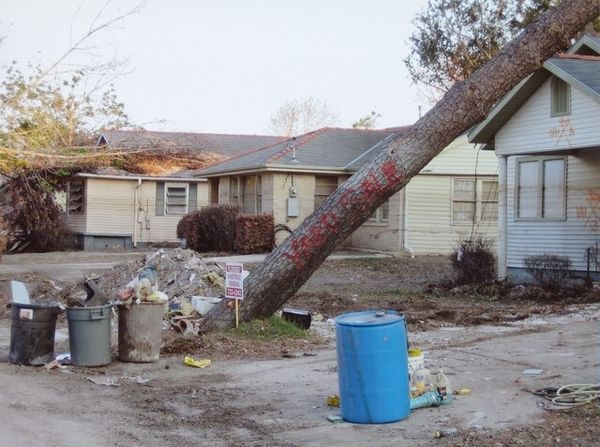![Untitled [New Orleans and the Gulf Coast, 2005] by Richard Misrach](/_next/image?url=https%3A%2F%2Fd2w8kbdekdi1gv.cloudfront.net%2FeyJidWNrZXQiOiAiYXJ0ZXJhLWltYWdlcy1idWNrZXQiLCAia2V5IjogImFydHdvcmtzL2U1MTczZjM5LWQ0OGMtNDFkZS04YWUxLTQ3ZTA2YTEyN2Y3OS9lNTE3M2YzOS1kNDhjLTQxZGUtOGFlMS00N2UwNmExMjdmNzlfZnVsbC5qcGciLCAiZWRpdHMiOiB7InJlc2l6ZSI6IHsid2lkdGgiOiAxOTIwLCAiaGVpZ2h0IjogMTkyMCwgImZpdCI6ICJpbnNpZGUifX19&w=1920&q=75)
Untitled [New Orleans and the Gulf Coast, 2005] Possibly 2005 - 2010
0:00
0:00
mixed-media, photography, site-specific
#
mixed-media
#
contemporary
#
street-art
#
landscape
#
social-realism
#
photography
#
derelict
#
site-specific
#
realism
Dimensions: image: 27.62 x 36.83 cm (10 7/8 x 14 1/2 in.) sheet: 28.89 x 38.1 cm (11 3/8 x 15 in.)
Copyright: National Gallery of Art: CC0 1.0
Curator: Richard Misrach's "Untitled [New Orleans and the Gulf Coast, 2005]," possibly created between 2005 and 2010, confronts us with a complex visual statement rendered through the medium of photography. Editor: My immediate reaction is one of somber dissonance. The scene feels almost aggressively ordinary, yet saturated with a silent scream of protest and decay. Curator: Dissonance is a pertinent observation. Consider how the composition itself is divided: the clear structural lines of the stone facade sharply contrasting with the messy plywood ramp and the chaotic sign. This creates visual tension, disrupting any easy reading. Editor: That hastily painted sign dominates the symbolic landscape here. The words, raw and accusatory, become potent symbols of anger and abandonment in the wake of devastation. Rebuild juxtaposed with accusations of corruption...it evokes deep-seated distrust in power structures. Curator: Indeed. The rough materiality of the sign is also key. It refuses the clean, detached aesthetic one might expect. It's immediate, urgent, a direct intervention. Editor: And what about the absent inhabitants? The emptiness screams louder than the words. This house becomes a symbol not only of loss, but also of a broken social contract. It speaks volumes about who gets left behind in times of crisis. The raised USA flag can’t mask this feeling. Curator: Precisely. The ramp becomes a visual motif, signifying both accessibility and perhaps, futile attempts at recovery. Its presence complicates the scene. Does it represent resilience or the struggle against insurmountable odds? Editor: Ultimately, Misrach uses very stark elements—the remnants of a familiar domestic scene combined with bold accusations—to force the viewer to confront uncomfortable truths about systemic failure. Curator: Looking through the framing, tonal balance, and juxtapositions in the image, what's most arresting for me is how such specific devastation transcends its local moment, evolving into a broader commentary on power and its consequences. Editor: For me, Misrach captured a haunting reminder of the enduring emotional and social scars left behind when promises of rebuilding remain unfulfilled, transforming houses into monuments of shattered trust.
Comments
No comments
Be the first to comment and join the conversation on the ultimate creative platform.
